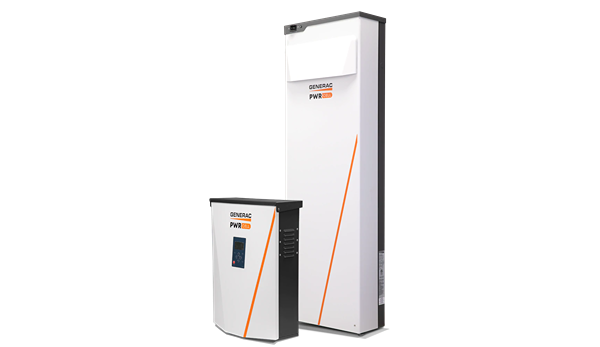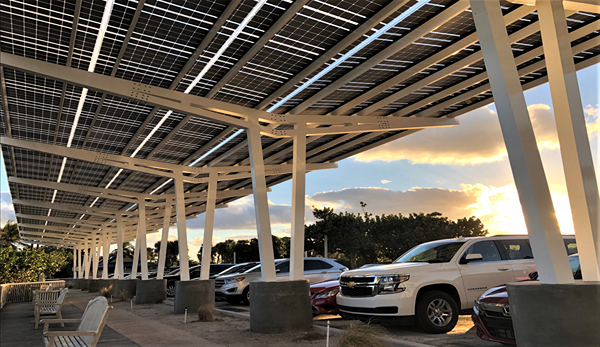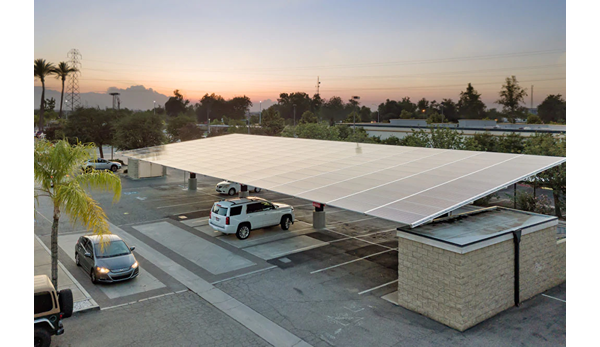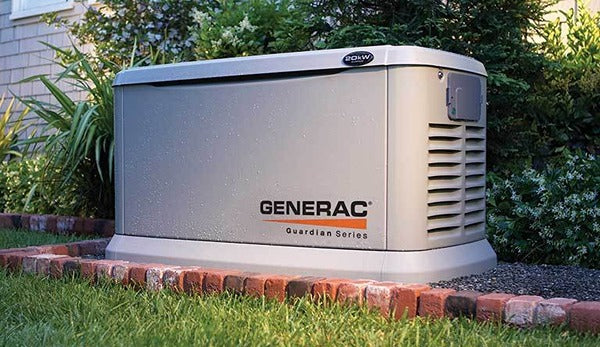
Net Metering and Renewable Portfolio Standards: How Does Your Utility Credit You For Your Solar Production?
Net Metering and Renewable Portfolio Standards - How Does Your Utility Credit You For Your Solar Production?
As solar energy continues to grow in popularity, many homeowners are looking for ways to offset their energy costs and reduce their carbon footprint. One popular option is net metering, a program offered by many utilities that allows homeowners to earn credits for the excess solar energy they produce.
Definition of Net Metering
Net metering is a billing arrangement between homeowners who generate their own electricity, typically through solar panels, and their utility company. Under net metering, excess electricity generated by solar panels is sent back to the grid, and the homeowner earns credits on their electricity bill for the amount of electricity produced.
Why Net Metering is Important
Net metering is important because it incentivizes the adoption of renewable energy sources like solar power. By earning credits for the excess electricity produced, homeowners can offset the cost of their energy bills and make it more affordable to switch to renewable energy.
How Net Metering Works
Net metering works by allowing homeowners to earn credits for the excess electricity they produce through their solar panels. The credits earned can then be applied to future electricity bills, effectively reducing the homeowner's energy costs.
Types of Net Metering Agreements
There are several types of net metering agreements that homeowners can choose from, depending on their individual needs and preferences.
One-to-one Net Metering is the most common type of net metering agreement, and it's also the simplest. Under this arrangement, homeowners receive credits for the excess energy they produce on a one-to-one basis, meaning that they receive a credit for each unit of energy they produce that is equal to the cost of a unit of energy they consume from the grid.
For example, if a homeowner produces 10 units of energy from their solar panels but only consumes 8 units, they will receive credits for the 2 excess units. These credits will be applied to their electricity bill, offsetting the cost of the 8 units of energy they consumed from the grid.
Net Metering with Time-of-Use Rates is another option that allows homeowners to earn credits for the excess electricity they produce at different rates depending on the time of day it is produced. This can be advantageous for homeowners who produce most of their electricity during peak hours when electricity rates are highest.
Net metering with time-of-use rates is a variation of one-to-one net metering that takes into account the time of day that energy is produced and consumed. With this type of agreement, the value of the credits received for excess energy may vary depending on the time of day. This means that homeowners may receive a higher credit for energy produced during peak hours, when electricity is more expensive, and a lower credit for energy produced during off-peak hours.
For example, if a homeowner produces 10 units of energy during peak hours and 8 units during off-peak hours, they will receive a higher credit for the 10 units produced during peak hours, as the cost of electricity is higher during those times. The exact rates for time-of-use net metering agreements vary depending on the utility and the specific agreement.
Feed-In Tariffs are a type of net metering agreement that pays homeowners a fixed rate for the excess electricity, regardless of when it is produced. This rate is typically higher than the cost of energy from the grid, providing homeowners with a financial incentive to invest in renewable energy systems. Feed-in tariffs are often used in countries such as Germany and Australia to promote the adoption of renewable energy systems.
Net Purchase and Sale is a type of net metering agreement that allows homeowners to sell their excess electricity back to the grid at a fixed rate, rather than earning credits on their electricity bill. Net purchase and sale agreements can also allow homeowners to sell ALL of the energy they produce back to the grid, rather than just the excess energy. This means that homeowners can potentially earn money from their renewable energy systems, rather than just offsetting their energy costs. Net purchase and sale agreements are less common than other types of net metering agreements, as they require more complex metering and billing systems.
Aggregate Net Metering allows multiple homeowners to share the benefits of a single renewable energy system. This is typically used in community solar projects, where a large solar system is installed in a central location and the benefits are shared among multiple homeowners in the community. Under aggregate net metering, each homeowner receives credits for their share of the energy produced by the system, based on the proportion of the system they own. This allows homeowners who may not have the ability to install their own renewable energy system to benefit from clean energy and lower electricity bills.
Virtual Net Metering / Community Solar is another type of net metering agreement that allows homeowners to benefit from solar energy even if they cannot, or do not want to install solar panels on their own property.
Virtual net metering, also known as community solar, is a program that allows multiple customers to share the benefits of a single solar system. Under this program, customers can subscribe to a portion of a community solar system and receive credit on their electricity bills for the electricity produced by their share of the system.
Virtual net metering is a great option for customers who are unable to install solar panels on their own property, such as renters or homeowners with shaded roofs. It is also a good option for customers who want to support the development of renewable energy in their community.
To be eligible for virtual net metering, customers must meet certain requirements, such as being located within the service territory of the community solar system and having a compatible metering system. They must also sign a subscription agreement and agree to pay a monthly fee for their share of the system.
Net Metering and Community Solar
Another type of net metering agreement is community solar, also known as shared solar or solar gardens. Community solar allows multiple people to benefit from a single solar array, even if they can't install solar panels on their own property. Under this program, customers can subscribe to a portion of a community solar system and receive credit on their electricity bills for the electricity produced by their share of the system.
Community solar projects can be owned by individuals, businesses, or utilities, and they may be located in various locations, such as rooftops or vacant lots. Community solar can provide benefits to low-income households, renters, and those who live in areas where installing solar panels is not feasible.
Community solar is a great option for customers who are unable to install solar panels on their own property, such as renters or homeowners with shaded roofs. It is also a good option for customers who want to support the development of renewable energy in their community.
Community solar programs can vary widely in their structure and pricing, so it is important to carefully review the terms of any program you are considering. You should also consider the size and location of the community solar system, the amount of electricity it is expected to produce, and the expected savings on your electricity bills.
Benefits of Net Metering
There are several benefits of net metering for homeowners who choose to participate in these programs.
Financial savings are perhaps the most significant benefit of net metering. By earning credits for the excess electricity produced, homeowners can offset the cost of their energy bills and make it more affordable to switch to renewable energy.
Environmental benefits are another important benefit. By generating their own electricity with solar panels, homeowners can reduce their carbon footprint and contribute to a cleaner, more sustainable energy future.
Energy independence is another benefit of net metering. By generating their own electricity, homeowners are less reliant on the grid and can be more self-sufficient in the event of power outages or other disruptions.
Increased home value is another potential benefit of net metering. Solar panels and other renewable energy features can increase the value of a home and make it more attractive to potential buyers.
Eligibility for Net Metering
Net metering is a way for homeowners to generate their own electricity through renewable energy sources, such as solar panels, and receive credit for any excess energy they produce. To be eligible for net metering, homeowners must meet certain criteria. First and foremost, they must have an approved renewable energy system installed on their property. Additionally, they must be connected to the grid and have a bi-directional meter that can measure the amount of electricity they consume and produce.
Net Metering Caps and Restrictions
While net metering policies are designed to incentivize the adoption of renewable energy, they often come with caps and restrictions. These caps limit the amount of electricity that can be produced and consumed under the net metering policy. Once a homeowner reaches the cap, they may no longer receive credits for excess energy produced. It's important for homeowners to understand the caps and restrictions associated with their specific net metering policy to ensure they are maximizing their benefits.
Understand Your Local Net Metering Policy
It's essential for homeowners to research and understand their local net metering policy before investing in a renewable energy system. The policies vary by state and utility, and it's important to understand the specific regulations and requirements. Homeowners should also be aware of any upcoming changes to the policy, as these can impact their benefits and ability to participate in net metering.
Residential Solar Panel System Requirements
In order to participate in net metering, homeowners must have a renewable energy system installed on their property. This typically means installing solar panels, which can vary in size and type depending on the homeowner's energy needs and budget. It's important to work with a qualified installer to ensure that the system meets all local and state regulations.
Utility-Specific Requirements
In addition to state regulations, each utility may have its own specific requirements for net metering. These requirements can vary in terms of caps, restrictions, and other details. It's important for homeowners to work closely with their utility company to ensure they are meeting all of the necessary requirements and maximizing their benefits.
State-Specific Regulations
Net metering policies and regulations vary by state, which can impact the benefits and eligibility for homeowners. Some states have more favorable policies than others, and it's important for homeowners to understand the regulations in their state before investing in a renewable energy system. Additionally, some states may offer incentives or tax credits to encourage the adoption of renewable energy.
Net Metering vs. Self-Consumption
While net metering is a popular option for homeowners with renewable energy systems, there is also the option of self-consumption. This means that homeowners use the energy they produce directly, rather than sending it back to the grid for credit. Self-consumption can be a good option for homeowners who have high energy needs or who live in areas with low net metering caps.
Differences between Net Metering and Self-Consumption
There are several key differences between net metering and self-consumption. With net metering, homeowners receive credit for excess energy produced and can use that credit to offset their electricity bill. With self-consumption, homeowners use the energy they produce directly and may not receive any credits for excess energy. Additionally, self-consumption can require a larger initial investment in renewable energy systems to meet energy needs.
Pros and Cons of Each Option
Both net metering and self-consumption have their advantages and disadvantages. Net metering can provide homeowners with significant savings on their electricity bills and can help incentivize the adoption of renewable energy. However, it can also be limited by caps and restrictions. Self-consumption can provide homeowners with more control over their energy use and may not be subject to caps, but can require a larger initial investment.
Net Metering and Battery Storage
Combining net metering with battery storage has become increasingly popular for homeowners seeking greater energy independence and cost savings. By storing excess electricity generated by their solar panels, homeowners can use it during periods of high electricity demand, when rates are at their peak, or during power outages. In this way, they can reduce their reliance on the grid and avoid high electricity bills.
Battery storage systems can also be used to complement net metering by providing additional benefits, such as grid support and load shifting. By storing excess electricity during periods of low demand, battery storage can help to balance the grid, reducing the need for expensive “peaker” plants. It can also be used to shift electricity usage to off-peak hours, when electricity rates are lower.
When considering battery storage for your net metering system, it is important to consider several factors, such as the size and type of battery, the installation and maintenance costs, and the amount of electricity you use and produce. You should also consider whether your utility has any restrictions or requirements related to battery storage, such as limits on the size or type of battery you can install.
Net Metering and Interconnection
Interconnection is the process of connecting a renewable energy system, such as solar panels, to the electric grid. It involves the installation of a special meter that measures the electricity generated by the solar system and the electricity used by the customer. The meter also measures the excess electricity that is sent back to the grid.
Net metering is not possible without interconnection, as excess electricity from the solar panels must be sent back to the grid.
There are two types of interconnection: parallel and stand-alone. In parallel interconnection, the renewable energy system operates in conjunction with the utility grid. In stand-alone interconnection, the renewable energy system operates independently of the utility grid.
The interconnection process can be complicated, as it involves various approvals and inspections. It is important to follow the guidelines and requirements set forth by your utility and state regulatory agency to ensure a successful interconnection process.
The interconnection process can vary depending on the size and type of the solar system and the requirements of the utility. In general, it involves submitting an application to the utility, providing information about the solar system and the interconnection equipment, and paying any fees associated with the process.
There are three types of interconnection: parallel operation, islanding, and utility interactive.
The process involves installing a bi-directional meter that measures both the energy you use from the grid and the excess energy you send back to the grid.
Parallel operation is the most common type of interconnection, where your solar panel system is connected directly to the utility grid. Islanding is a type of interconnection that allows your solar panel system to operate independently from the utility grid during a power outage. Utility interactive is a type of interconnection that allows your solar panel system to operate in parallel with the utility grid and provide power to the grid when there is excess energy.
Net Metering and Metering
Meters are devices that measure the flow of electricity in and out of your home or business. There are several types of meters, including analog meters, digital meters, and smart meters. Net metering requires a special type of meter that can measure both the electricity you use and the excess electricity you send back to the grid.
It is important to understand how to read your meter and ensure its accuracy, as it determines the amount of credit you receive for excess electricity production. If you suspect that your meter is not functioning properly, contact your utility to request a meter inspection.
You can check your meter to see how much energy you are using and producing at any given time. Meters also play a critical role in determining your eligibility for net metering, as they measure the amount of energy you produce and send back to the grid.
The most common types of meters are analog meters, digital meters, and smart meters. Analog meters are the oldest type of meter and have a spinning disk that measures your energy consumption. Digital meters have a digital display that shows your energy consumption. Smart meters are the most advanced type of meter and have features like remote monitoring and two-way communication.
Importance of Metering Accuracy
Metering accuracy is important for both the customer and the utility. For customers, metering accuracy ensures that they are being billed accurately and receiving credit for the energy they produce. For utilities, metering accuracy ensures that they are able to accurately track energy production and consumption to meet regulatory requirements and to maintain grid stability. It is important to ensure that your meter is functioning properly and that you are receiving accurate billing and credit for your excess energy production.
Net Metering and Billing
Net metering can affect your electricity bill, as you are credited for the excess electricity you produce. The amount of credit you receive depends on your utility's net metering policy and the amount of excess electricity you produce.
Under a net metering agreement, you are only billed for the net amount of electricity you use from the grid. This means that if you produce more energy than you use in a given month, you will receive a credit on your bill for the excess energy. If you use more energy than you produce, you will be billed for the net amount of energy you use.
Billing procedures for net metering customers vary depending on the utility and the state. Some utilities bill net metering customers monthly, while others bill them quarterly or annually. It is important to understand your utility's billing procedures and to keep track of your energy production and consumption to ensure that you are receiving accurate billing and credit for your excess energy production.
Common Billing Issues
Common billing issues for net metering customers include inaccurate meter readings, incorrect billing calculations, and delayed billing statements. It is important to monitor your billing statements and to contact your utility if you notice any discrepancies or issues.
In addition, it is important to keep accurate records of your energy production and consumption to ensure that you are receiving accurate billing and credit for your excess energy production.
Net Metering and Meter Upgrades
In some cases, meter upgrades may be necessary to properly measure your excess electricity production for net metering. The cost of meter upgrades varies by utility and may be borne by the customer or the utility.
If you are considering installing a solar panel system and applying for net metering, it is important to discuss metering requirements with your utility and factor in any potential meter upgrade costs into your budget.
Net Metering and Disconnection
In rare cases, net metering customers may face disconnection from the grid. This may occur if the renewable energy system is not functioning properly or if there is a safety concern. To avoid disconnection, it is important to properly maintain your renewable energy system and follow all safety guidelines and regulations.
If disconnection does occur, there is a re-connection process that must be followed to restore your access to the grid. Contact your utility for information on the specific steps required for re-connection.
Net Metering and Renewable Portfolio Standards
Renewable Portfolio Standards, or RPS, are regulations set by state governments that require utility companies to generate a certain percentage of their electricity from renewable sources. The purpose of RPS is to reduce greenhouse gas emissions and encourage the growth of renewable energy. Each state has its own RPS target, which typically increases over time. As of 2021, 31 states have RPS policies in place.
Net Metering is a billing arrangement that allows homeowners, businesses, and other organizations to generate their own electricity using renewable energy sources such as solar panels and wind turbines. Under this arrangement, any excess energy generated is fed back into the grid, and the homeowner or business owner is credited for that energy. This credit can then be used to offset the energy they consume from the grid when their renewable energy system is not generating enough electricity. Net Metering is a critical policy for supporting RPS because it incentivizes the development of renewable energy systems and allows homeowners and businesses to contribute to the growth of renewable energy.
Renewable Portfolio Standards are important because they are an effective way to reduce greenhouse gas emissions and combat climate change. By requiring utility companies to generate a certain percentage of their electricity from renewable sources, RPS policies encourage investment in renewable energy systems and drive down the cost of renewable energy technologies. This not only benefits the environment but also creates jobs and economic growth.
Net Metering and Policy
The policies surrounding net metering are constantly evolving, both at the federal and state level. Understanding your local net metering policy is critical in maximizing the benefits of your solar system.
Federal policies related to Net Metering include the Public Utility Regulatory Policies Act (PURPA), the Energy Policy Act of 2005, and the Investment Tax Credit (ITC). PURPA requires utilities to purchase energy from small renewable energy systems, while the Energy Policy Act of 2005 created a federal tax credit for residential and commercial renewable energy systems. The ITC provides a 26% tax credit for residential and commercial solar energy systems.
State policies related to net metering vary widely. Some states have established robust net metering programs that offer significant financial benefits to solar owners. Other states have limited net metering programs or none at all. Some states have even imposed caps on the amount of energy that can be produced through net metering, limiting the benefits for solar owners. However, many states are also working to strengthen their Net Metering policies to encourage the growth of renewable energy systems.
Future of Net Metering Policy
As the solar industry continues to grow and evolve, the future of net metering policy remains uncertain. Some utility companies are pushing to reduce or eliminate net metering programs, arguing that they place an unfair burden on non-solar customers. Others argue that net metering is critical in promoting renewable energy and reducing carbon emissions.
As a solar owner or someone considering going solar, it's important to stay informed about the latest developments in net metering policy. By advocating for policies that support net metering, you can help ensure that solar remains a viable option for homeowners and businesses for years to come.
Net Metering and Advocacy
Advocacy for net metering is critical in promoting policies that support renewable energy and reducing carbon emissions. There are a variety of resources available to those interested in advocating for net metering.
Local solar organizations, such as state solar associations, can provide information about local net metering policies and advocate for policies that support solar energy. National organizations, such as the Solar Energy Industries Association (SEIA), also advocate for policies that support solar energy at the federal level.
Individuals can also advocate for net metering by contacting their elected officials and expressing their support for policies that promote solar energy. By speaking out and raising awareness about the importance of net metering, individuals can help ensure that solar remains a viable option for years to come.
Conclusion
In conclusion, net metering is a critical component of the solar energy industry. By allowing solar owners to receive credit for excess energy production, net metering offers financial savings, environmental benefits, and increased energy independence.
There are several types of net metering agreements, including one-to-one net metering, net metering with time-of-use rates, feed-in tariffs, net purchase and sale, aggregate net metering, virtual net metering, and community solar.
While there are some potential drawbacks to net metering, including metering and billing issues, the benefits of net metering far outweigh the negatives. By understanding your local net metering policy, you can take advantage of the benefits of net metering and help promote policies that support renewable energy.


























